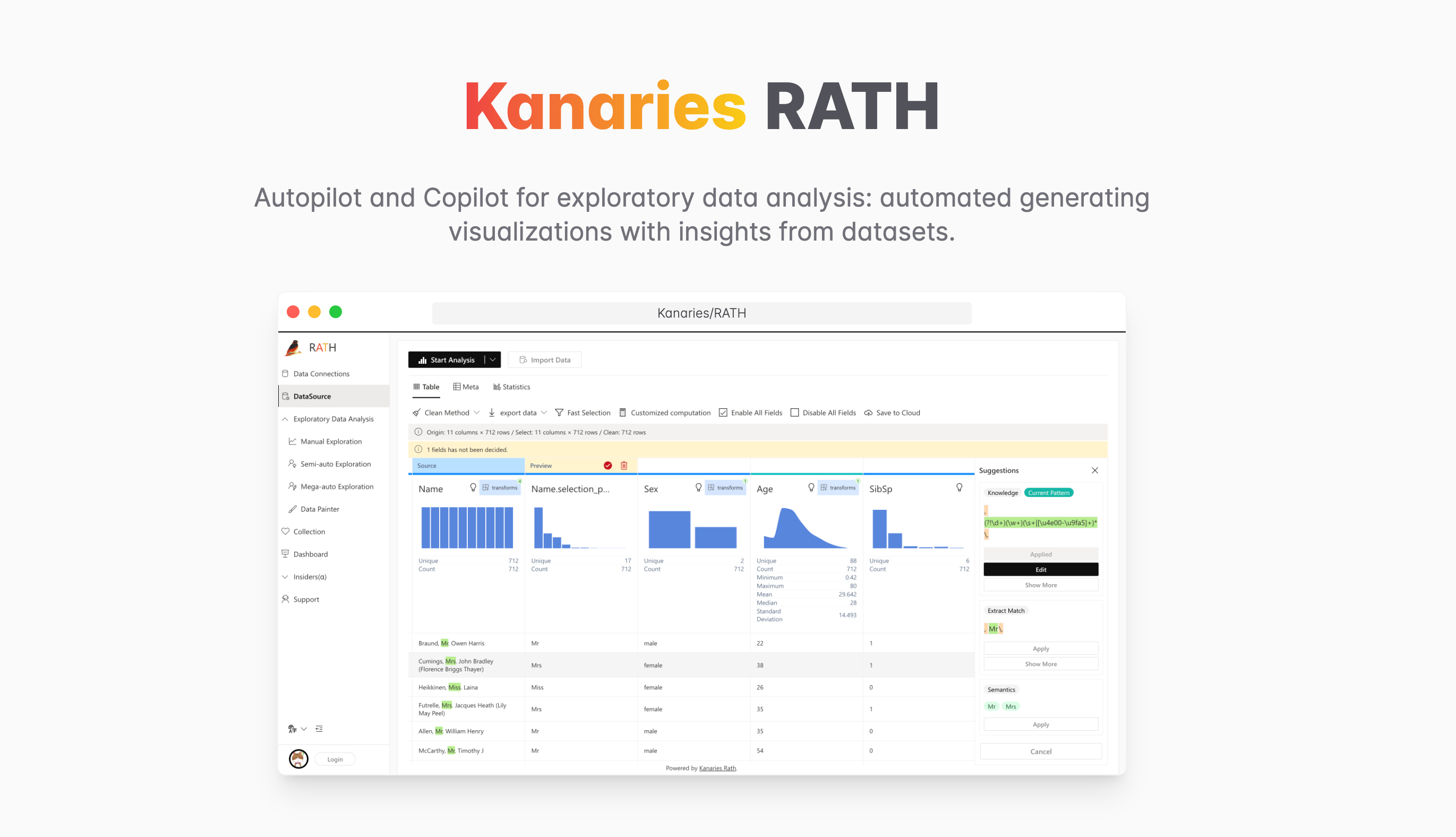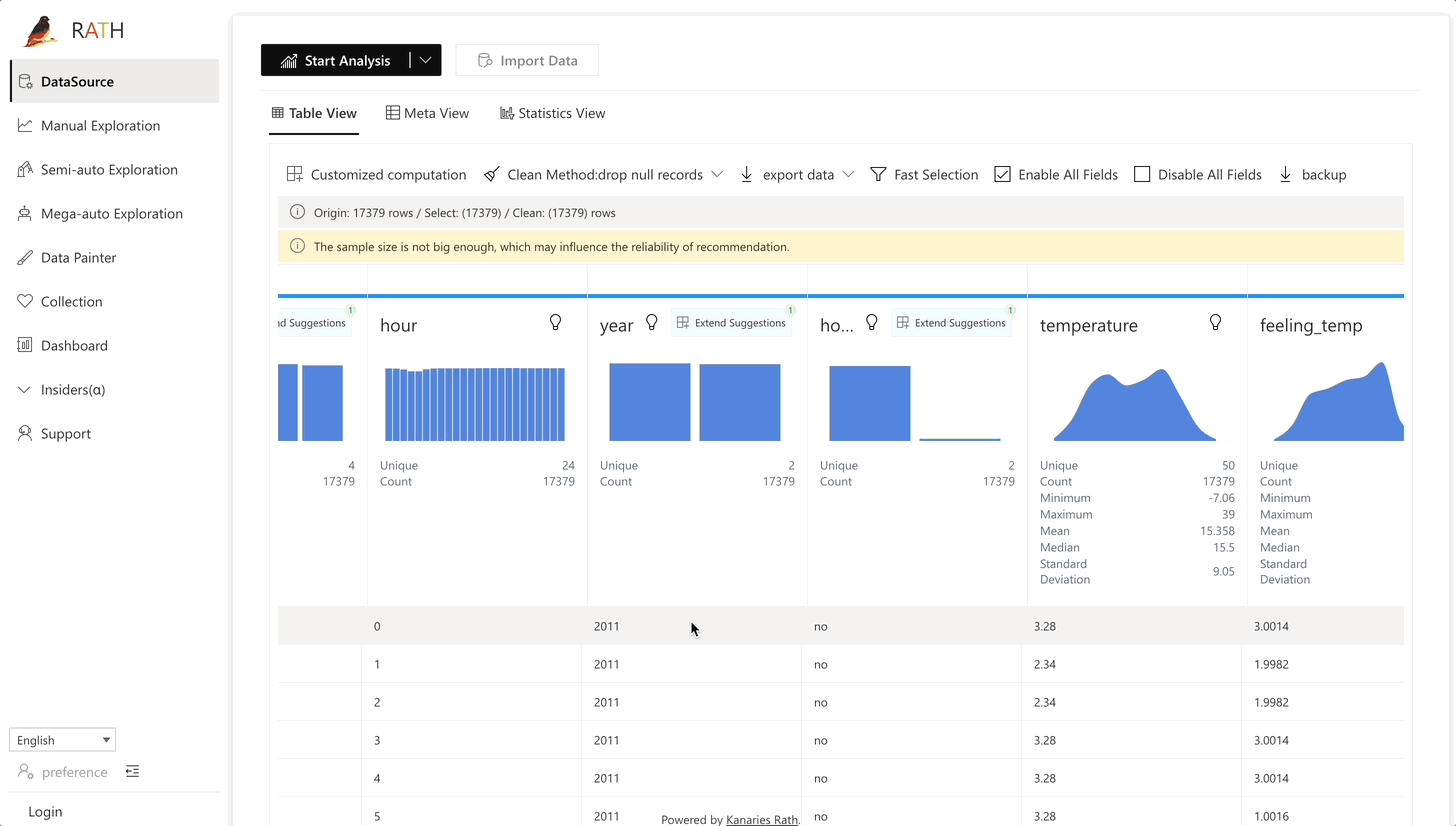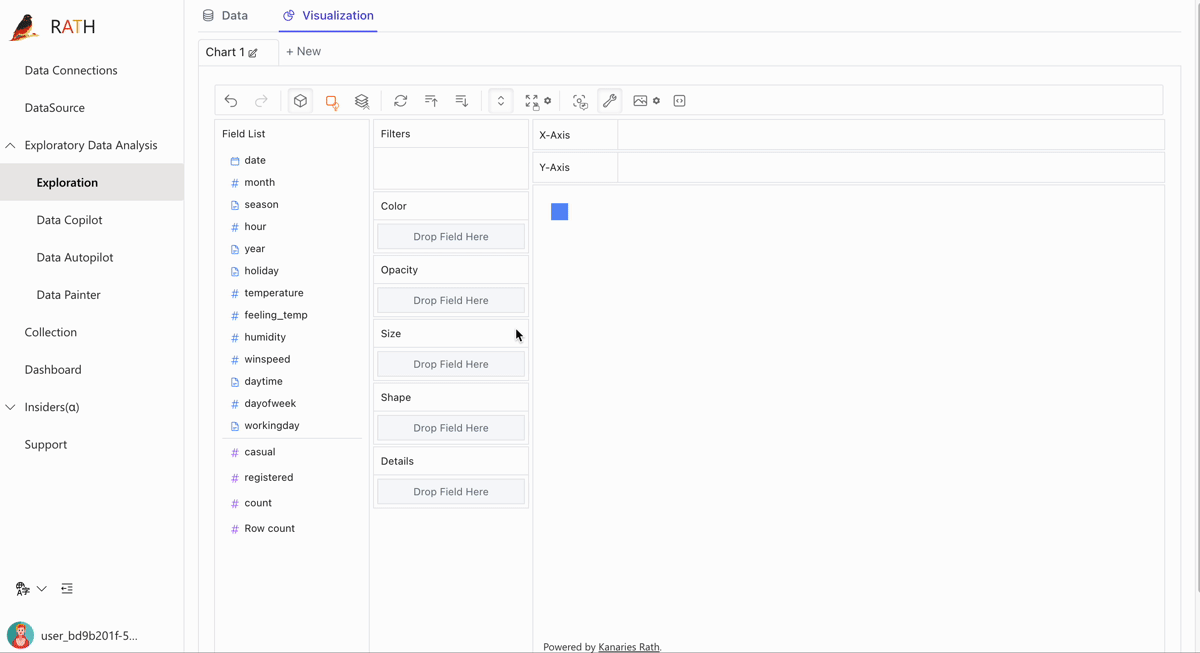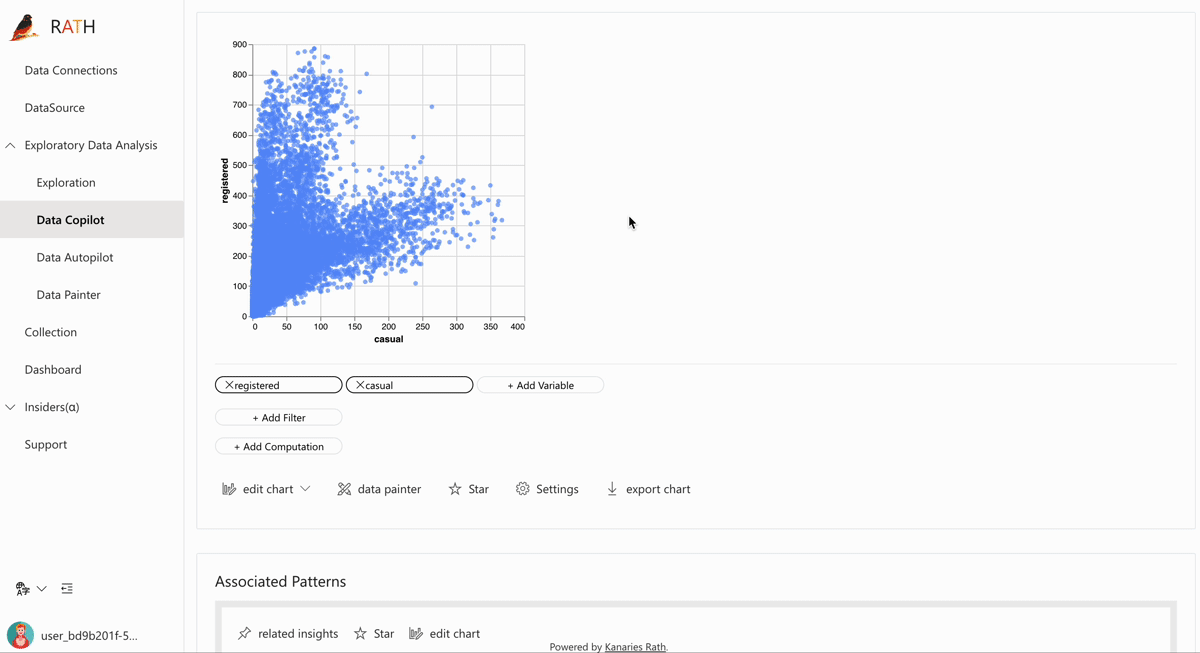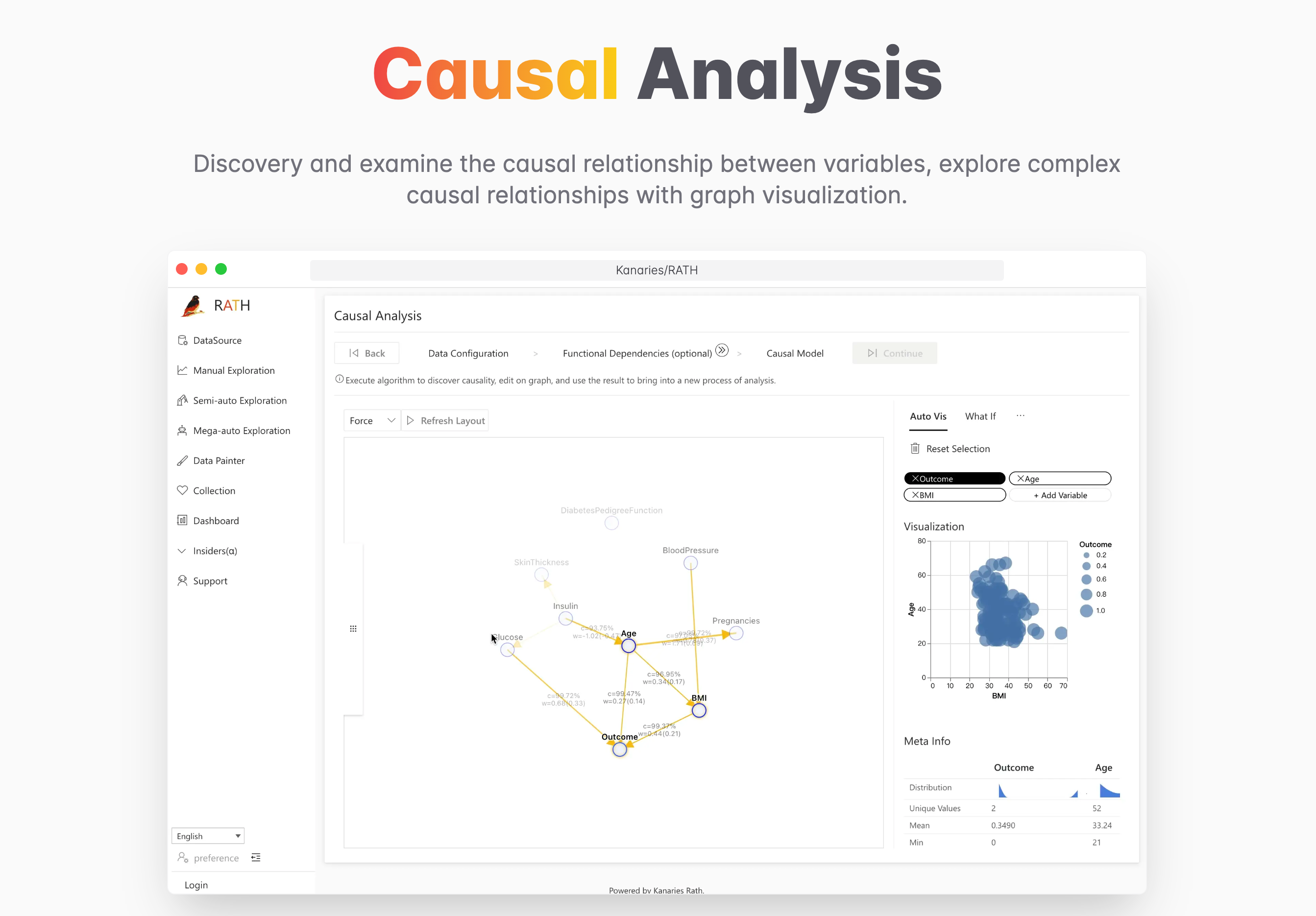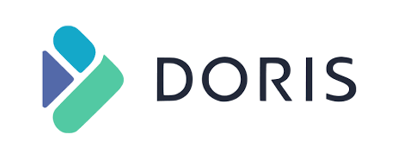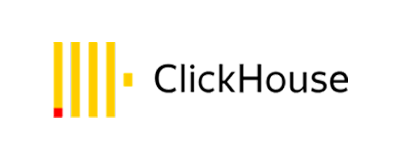import { Checkbox, DefaultButton, DetailsList, Dropdown, IColumn, Icon, Label, Pivot, PivotItem, SelectionMode, Spinner } from "@fluentui/react";
import produce from "immer";
import { observer } from "mobx-react-lite";
import { nanoid } from "nanoid";
import { forwardRef, useCallback, useEffect, useImperativeHandle, useMemo, useRef, useState } from "react";
import styled from "styled-components";
import type { IFieldMeta } from "../../interfaces";
import { useGlobalStore } from "../../store";
import { execPredict, IPredictProps, IPredictResult, PredictAlgorithm, PredictAlgorithms, TrainTestSplitFlag } from "./predict";
const Container = styled.div`
flex-grow: 1;
flex-shrink: 1;
display: flex;
flex-direction: column;
overflow: hidden;
> .content {
flex-grow: 1;
flex-shrink: 1;
display: flex;
flex-direction: column;
padding: 0.5em;
overflow: auto;
> * {
flex-grow: 0;
flex-shrink: 0;
}
}
`;
const TableContainer = styled.div`
flex-grow: 0;
flex-shrink: 0;
overflow: auto;
`;
const Row = styled.div<{ selected: 'attribution' | 'target' | false }>`
> div {
background-color: ${({ selected }) => (
selected === 'attribution' ? 'rgba(194,132,2,0.2)' : selected === 'target' ? 'rgba(66,121,242,0.2)' : undefined
)};
filter: ${({ selected }) => selected ? 'unset' : 'opacity(0.8)'};
cursor: pointer;
:hover {
filter: unset;
}
}
`;
const ModeOptions = [
{ key: 'classification', text: '分类' },
{ key: 'regression', text: '回归' },
] as const;
// FIXME: 防止切到别的流程时预测结果被清空,先在全局存一下,决定好要不要保留 && 状态应该存哪里以后及时迁走
const predictCache: {
id: string; algo: PredictAlgorithm; startTime: number; completeTime: number; data: IPredictResult;
}[] = [];
const PredictPanel = forwardRef<{
updateInput?: (input: { features: IFieldMeta[]; targets: IFieldMeta[] }) => void;
}, {}>(function PredictPanel (_, ref) {
const { causalStore, dataSourceStore } = useGlobalStore();
const { selectedFields } = causalStore;
const { cleanedData, fieldMetas } = dataSourceStore;
const [predictInput, setPredictInput] = useState<{ features: IFieldMeta[]; targets: IFieldMeta[] }>({
features: [],
targets: [],
});
const [algo, setAlgo] = useState<PredictAlgorithm>('decisionTree');
const [mode, setMode] = useState<IPredictProps['mode']>('classification');
useImperativeHandle(ref, () => ({
updateInput: input => setPredictInput(input),
}));
useEffect(() => {
setPredictInput(before => {
if (before.features.length || before.targets.length) {
return {
features: selectedFields.filter(f => before.features.some(feat => feat.fid === f.fid)),
targets: selectedFields.filter(f => before.targets.some(tar => tar.fid === f.fid)),
};
}
return {
features: selectedFields.slice(1).map(f => f),
targets: selectedFields.slice(0, 1),
};
});
}, [selectedFields]);
const [running, setRunning] = useState(false);
const fieldsTableCols = useMemo<IColumn[]>(() => {
return [
{
key: 'selectedAsFeature',
name: `特征 (${predictInput.features.length} / ${selectedFields.length})`,
onRender: (item) => {
const field = item as IFieldMeta;
const checked = predictInput.features.some(f => f.fid === field.fid);
return (
<Checkbox
checked={checked}
disabled={running}
onChange={(_, ok) => {
if (running) {
return;
}
setPredictInput(produce(predictInput, draft => {
draft.features = draft.features.filter(f => f.fid !== field.fid);
draft.targets = draft.targets.filter(f => f.fid !== field.fid);
if (ok) {
draft.features.push(field);
}
}));
}}
/>
);
},
isResizable: false,
minWidth: 90,
maxWidth: 90,
},
{
key: 'selectedAsTarget',
name: `目标 (${predictInput.targets.length} / ${selectedFields.length})`,
onRender: (item) => {
const field = item as IFieldMeta;
const checked = predictInput.targets.some(f => f.fid === field.fid);
return (
<Checkbox
checked={checked}
disabled={running}
onChange={(_, ok) => {
if (running) {
return;
}
setPredictInput(produce(predictInput, draft => {
draft.features = draft.features.filter(f => f.fid !== field.fid);
draft.targets = draft.targets.filter(f => f.fid !== field.fid);
if (ok) {
draft.targets.push(field);
}
}));
}}
/>
);
},
isResizable: false,
minWidth: 90,
maxWidth: 90,
},
{
key: 'name',
name: '因素',
onRender: (item) => {
const field = item as IFieldMeta;
return (
<span style={{ overflow: 'hidden', textOverflow: 'ellipsis' }}>
{field.name || field.fid}
</span>
);
},
minWidth: 120,
},
];
}, [selectedFields, predictInput, running]);
const canExecute = predictInput.features.length > 0 && predictInput.targets.length > 0;
const pendingRef = useRef<Promise<unknown>>();
useEffect(() => {
pendingRef.current = undefined;
setRunning(false);
}, [predictInput]);
const dataSourceRef = useRef(cleanedData);
dataSourceRef.current = cleanedData;
const allFieldsRef = useRef(fieldMetas);
allFieldsRef.current = fieldMetas;
const [results, setResults] = useState<{
id: string; algo: PredictAlgorithm; startTime: number; completeTime: number; data: IPredictResult;
}[]>([]);
// FIXME: 防止切到别的流程时预测结果被清空,先在全局存一下,决定好要不要保留 && 状态应该存哪里以后及时迁走
useEffect(() => {
setResults(predictCache);
return () => {
setResults(res => {
predictCache.splice(0, Infinity, ...res);
return [];
});
};
}, [cleanedData, fieldMetas]);
const [tab, setTab] = useState<'config' | 'result'>('config');
const trainTestSplitIndices = useMemo<TrainTestSplitFlag[]>(() => {
const TRAIN_RATE = 0.2;
const indices = cleanedData.map((_, i) => i);
const trainSetIndices = new Map<number, 1>();
const trainSetTargetSize = Math.floor(cleanedData.length * TRAIN_RATE);
while (trainSetIndices.size < trainSetTargetSize && indices.length) {
const [index] = indices.splice(Math.floor(indices.length * Math.random()), 1);
trainSetIndices.set(index, 1);
}
return cleanedData.map((_, i) => trainSetIndices.has(i) ? TrainTestSplitFlag.train : TrainTestSplitFlag.test);
}, [cleanedData]);
const trainTestSplitIndicesRef = useRef(trainTestSplitIndices);
trainTestSplitIndicesRef.current = trainTestSplitIndices;
const handleClickExec = useCallback(() => {
const startTime = Date.now();
setRunning(true);
const task = execPredict({
dataSource: dataSourceRef.current,
fields: allFieldsRef.current,
model: {
algorithm: algo,
features: predictInput.features.map(f => f.fid),
targets: predictInput.targets.map(f => f.fid),
},
trainTestSplitIndices: trainTestSplitIndicesRef.current,
mode,
});
pendingRef.current = task;
task.then(res => {
if (task === pendingRef.current && res) {
const completeTime = Date.now();
setResults(list => {
const record = {
id: nanoid(8),
algo,
startTime,
completeTime,
data: res,
};
if (list.length > 0 && list[0].algo !== algo) {
return [record];
}
return list.concat([record]);
});
setTab('result');
}
}).finally(() => {
pendingRef.current = undefined;
setRunning(false);
});
}, [predictInput, algo, mode]);
const sortedResults = useMemo(() => {
return results.slice(0).sort((a, b) => b.completeTime - a.completeTime);
}, [results]);
const [comparison, setComparison] = useState<null | [string] | [string, string]>(null);
useEffect(() => {
setComparison(group => {
if (!group) {
return null;
}
const next = group.filter(id => results.some(rec => rec.id === id));
if (next.length === 0) {
return null;
}
return next as [string] | [string, string];
});
}, [results]);
const resultTableCols = useMemo<IColumn[]>(() => {
return [
{
key: 'selected',
name: '对比',
onRender: (item) => {
const record = item as typeof sortedResults[number];
const selected = (comparison ?? [] as string[]).includes(record.id);
return (
<Checkbox
checked={selected}
onChange={(_, checked) => {
if (checked) {
setComparison(group => {
if (group === null) {
return [record.id];
}
return [group[0], record.id];
});
} else if (selected) {
setComparison(group => {
if (group?.some(id => id === record.id)) {
return group.length === 1 ? null : group.filter(id => id !== record.id) as [string];
}
return null;
});
}
}}
/>
);
},
isResizable: false,
minWidth: 30,
maxWidth: 30,
},
{
key: 'index',
name: '运行次数',
minWidth: 70,
maxWidth: 70,
isResizable: false,
onRender(_, index) {
return <>{index !== undefined ? (sortedResults.length - index) : ''}</>;
},
},
{
key: 'algo',
name: '预测模型',
minWidth: 70,
onRender(item) {
const record = item as typeof sortedResults[number];
return <>{PredictAlgorithms.find(which => which.key === record.algo)?.text}</>
},
},
{
key: 'accuracy',
name: '准确率',
minWidth: 150,
onRender(item, index) {
if (!item || index === undefined) {
return <></>;
}
const record = item as typeof sortedResults[number];
const previous = sortedResults[index + 1];
const comparison: 'better' | 'worse' | 'same' | null = previous ? (
previous.data.accuracy === record.data.accuracy ? 'same'
: record.data.accuracy > previous.data.accuracy ? 'better' : 'worse'
) : null;
return (
<span
style={{
color: {
better: '#0b5a08',
worse: '#6e0811',
same: '#7a7574',
}[comparison!],
display: 'flex',
alignItems: 'center',
}}
>
{comparison && (
<Icon
iconName={{
better: 'CaretSolidUp',
worse: 'CaretSolidDown',
same: 'ChromeMinimize',
}[comparison]}
style={{
transform: 'scale(0.8)',
transformOrigin: '0 50%',
marginRight: '0.2em',
}}
/>
)}
{record.data.accuracy}
</span>
);
},
},
];
}, [sortedResults, comparison]);
const diff = useMemo(() => {
if (comparison?.length === 2) {
const before = sortedResults.find(res => res.id === comparison[0]);
const after = sortedResults.find(res => res.id === comparison[1]);
if (before && after) {
const temp: unknown[] = [];
for (let i = 0; i < before.data.result.length; i += 1) {
const row = dataSourceRef.current[before.data.result[i][0]];
const prev = before.data.result[i][1];
const next = after.data.result[i][1];
if (next === 1 && prev === 0) {
temp.push(Object.fromEntries(Object.entries(row).map(([k, v]) => [
allFieldsRef.current.find(f => f.fid === k)?.name ?? k,
v,
])));
}
}
return temp;
}
}
}, [sortedResults, comparison]);
useEffect(() => {
if (diff) {
// TODO: 在界面上实现一个 diff view,代替这个 console
// eslint-disable-next-line no-console
console.table(diff);
}
}, [diff]);
return (
<Container>
<DefaultButton
primary
iconProps={{ iconName: 'Trending12' }}
disabled={!canExecute || running}
onClick={running ? undefined : handleClickExec}
onRenderIcon={() => running ? <Spinner style={{ transform: 'scale(0.75)' }} /> : <Icon iconName="Play" />}
style={{ width: 'max-content', flexGrow: 0, flexShrink: 0, marginLeft: '0.6em' }}
split
menuProps={{
items: ModeOptions.map(opt => opt),
onItemClick: (_e, item) => {
if (item) {
setMode(item.key as typeof mode);
}
},
}}
>
{`${ModeOptions.find(m => m.key === mode)?.text}预测`}
</DefaultButton>
<Pivot
selectedKey={tab}
onLinkClick={(item) => {
item && setTab(item.props.itemKey as typeof tab);
}}
style={{ marginTop: '0.5em' }}
>
<PivotItem itemKey="config" headerText="模型设置" />
<PivotItem itemKey="result" headerText="预测结果" />
</Pivot>
<div className="content">
{{
config: (
<>
<Dropdown
label="模型选择"
options={PredictAlgorithms.map(algo => ({ key: algo.key, text: algo.text }))}
selectedKey={algo}
onChange={(_, option) => {
const item = PredictAlgorithms.find(which => which.key === option?.key);
if (item) {
setAlgo(item.key);
}
}}
style={{ width: 'max-content' }}
/>
<Label style={{ marginTop: '1em' }}>分析空间</Label>
<TableContainer>
<DetailsList
items={selectedFields}
columns={fieldsTableCols}
selectionMode={SelectionMode.none}
onRenderRow={(props, defaultRender) => {
const field = props?.item as IFieldMeta;
const checkedAsAttr = predictInput.features.some(f => f.fid === field.fid);
const checkedAsTar = predictInput.targets.some(f => f.fid === field.fid);
return (
<Row selected={checkedAsAttr ? 'attribution' : checkedAsTar ? 'target' : false}>
{defaultRender?.(props)}
</Row>
);
}}
/>
</TableContainer>
</>
),
result: (
<>
<DefaultButton
iconProps={{ iconName: 'Delete' }}
disabled={results.length === 0}
onClick={() => setResults([])}
style={{ width: 'max-content' }}
>
清空记录
</DefaultButton>
<TableContainer>
<DetailsList
items={sortedResults}
columns={resultTableCols}
selectionMode={SelectionMode.none}
/>
</TableContainer>
</>
),
}[tab]}
</div>
</Container>
);
});
export default observer(PredictPanel);
